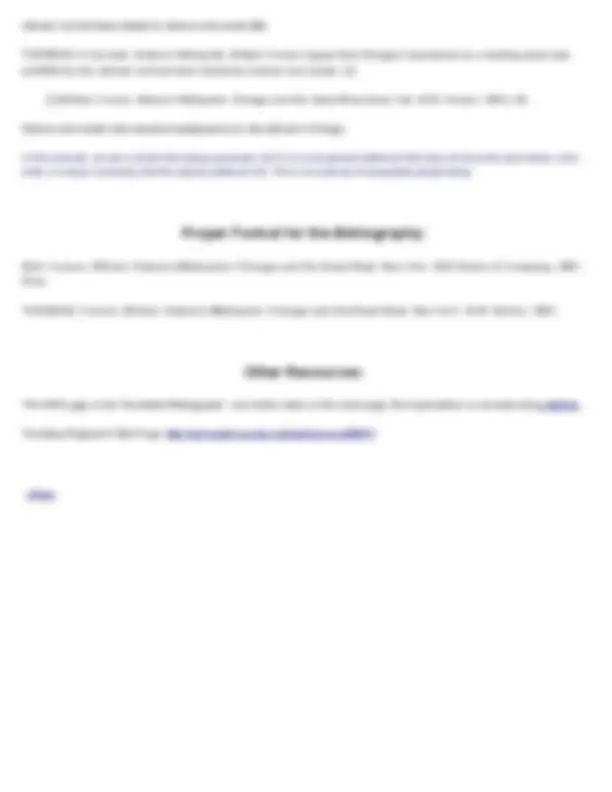



Study with the several resources on Docsity

Earn points by helping other students or get them with a premium plan


Prepare for your exams
Study with the several resources on Docsity

Earn points to download
Earn points by helping other students or get them with a premium plan
Community
Ask the community for help and clear up your study doubts
Discover the best universities in your country according to Docsity users
Free resources
Download our free guides on studying techniques, anxiety management strategies, and thesis advice from Docsity tutors
An overview of plagiarism, its examples, reasons to avoid it, and ways to prevent it. It includes a plagiarism exercise with proper citation techniques using both mla and turabian styles.
Typology: Slides
1 / 3

This page cannot be seen from the preview
Don't miss anything!


Plagiarism is the use of another person’s work or ideas without giving proper credit Examples of plagiarism include, but are not limited to: Directly copying sections of text from a written work without citation Reusing images, artwork, videos, or other visual materials without credit Claiming someone else’s idea as your own Can’t just paraphrase another’s thesis
You build pride in creating your own work that reflects your abilities and knowledge Plagiarism is an extremely offensive action and can result in: A failing grade Disciplinary action at school Disqualification from History Fair
Properly cite ALL material that is not your own. Do this by using in-text citations, footnotes, or endnotes Use quotation marks and citation when using words directly copied from another text Give credit immediately when paraphrasing another’s wording, ideas, or conclusions Take good notes. Detailed notes should record if something is an original quote, an original idea from a source, or your own conclusion or interpretation. Notes should also include the citation information for that source you are taking notes on
Common knowledge is something you can reasonably expect your audience to know or is used in multiple sources without citation, you do not need to cite common knowledge Examples: John F Kennedy was a president of the United States, the capital of the USA is Washington DC, water is a liquid If you unsure if it is common knowledge, consult your teacher
Below is a section of text from a secondary source, Nature's Metropolis by Wiiliam Cronon, followed by examples of plagiarism and then proper use and citation.
Examples of Plagiarism: In conclusion, railroads were important because they had made Chicago the most important meeting place between East and West. But they also continued the process begun long before with the harbor and the canal. In this example, the text was copied word for word but was not put into quotes or cited. The railroads made Chicago and important meeting place, continuing the tradition begun with harbors, canals, and the trading village. Chicago was truly an example of first and second natures interacting to create a single world. In this example, different words are used in places, but the word order is the same and the original author’s conclusion is still being used without recognition. Examples of Proper Citation: Student may use either MLA or Turabian citation formats--the key is to keep a consistent style. MLA uses an in-line citation text and Turabian uses a footnote style so that the citation appears at the concluding page. MLA: It is important to remember that, “railroads were important because they had made Chicago the most important meeting place between East and West. But they also continued the process begun long before with the harbor and the canal” (Cronon 92). TURABIAN:. It is important to remember that, “railroads were important because they had made Chicago the most important meeting place between East and West. But they also continued the process begun long before with the harbor and the canal.” [1] [1] William Cronon, Nature’s Metropolis: Chicago and the Great West (New York: W.W. Norton, 1991), 92. Here, the exact wording of the author is used but is now quoted and cited properly. Remember just putting it in quotes is not enough, you must ALSO include the citation. MLA: In his book, Nature’s Metropolis, William Cronon argues that Chicago’s importance as a meeting place was solidified by the